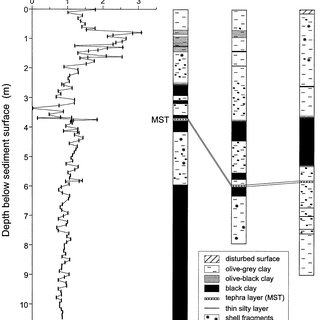Nestled in the azure waters of the Aegean Sea, the volcanic archipelago of Santorini captivates visitors with its stunning beauty and rich geological history. While the island’s iconic caldera bears witness to past cataclysmic events, recent scientific drilling has unveiled a long-hidden mystery: evidence of a historical submarine eruption dating back to 726 CE. In a groundbreaking study published in Nature Geoscience, an international team of scientists sheds light on this enigmatic event, offering new insights into Santorini’s volcanic behavior and its implications for hazard assessment and risk mitigation.
Exploring Santorini’s Volcanic Legacy: Santorini’s tumultuous geological past traces back millennia, marked by a series of cataclysmic eruptions that have shaped the island’s landscape. The most famous of these events occurred around 3,600 years ago, during the Late Bronze Age Minoan eruption, which devastated the region and left behind the iconic caldera that defines Santorini’s silhouette. Yet, this was not the only caldera collapse in Santorini’s history, as the island has experienced multiple cycles of volcanic activity and renewal over millions of years.
Intriguing Historical Accounts: The historical records of a submarine eruption in 726 CE have long puzzled researchers, with eyewitness reports describing the sea boiling and large blocks of pumice covering vast areas of the Aegean Sea. These accounts, while vivid, lacked concrete evidence to corroborate the occurrence of such an event. However, recent advancements in scientific drilling have provided an opportunity to delve deeper into Santorini’s volcanic history and validate these historical narratives.
Uncovering Submerged Secrets: Led by Dr. Steffen Kutterolf from GEOMAR Helmholtz Center for Ocean Research Kiel, an international team of scientists embarked on a mission to uncover remnants of the elusive 726 CE eruption. Through meticulous drilling and analysis, the researchers unearthed a layer of gray pumice and ash, up to 40 meters thick, unequivocally linked to the historical eruption. This discovery provides tangible evidence of a significant underwater volcanic event within Santorini’s submerged caldera.
Implications for Hazard Assessment: While the 726 CE eruption was considerably smaller than its ancient predecessor, the Minoan eruption, its significance lies in its implications for hazard assessment and risk mitigation. The findings challenge previous assumptions about Santorini’s volcanic behavior during the early stages of the caldera cycle, suggesting that even minor eruptions can occur with potentially far-reaching consequences. By recognizing the potential for submarine explosive eruptions, researchers can develop more comprehensive strategies for monitoring and mitigating volcanic hazards.
A Call for Greater Vigilance: The revelation of Santorini’s historical submarine eruption serves as a stark reminder of the inherent unpredictability of volcanic activity. As our understanding of submarine eruptions evolves, it becomes increasingly clear that we must remain vigilant in monitoring volcanic hotspots and assessing potential risks to human populations. By expanding our knowledge of past volcanic events, we can better prepare for future challenges and safeguard vulnerable communities from the impact of volcanic activity.
The discovery of evidence for a historical submarine eruption in Santorini’s caldera offers a fascinating glimpse into the island’s volcanic past and its enduring influence on the region. Through collaborative scientific endeavors and innovative research techniques, we continue to unravel the mysteries of Santorini’s geological legacy. As we navigate the dynamic landscapes of volcanic activity, let us draw inspiration from the resilience of nature and strive to protect our planet and its inhabitants from the forces that shape our world.
